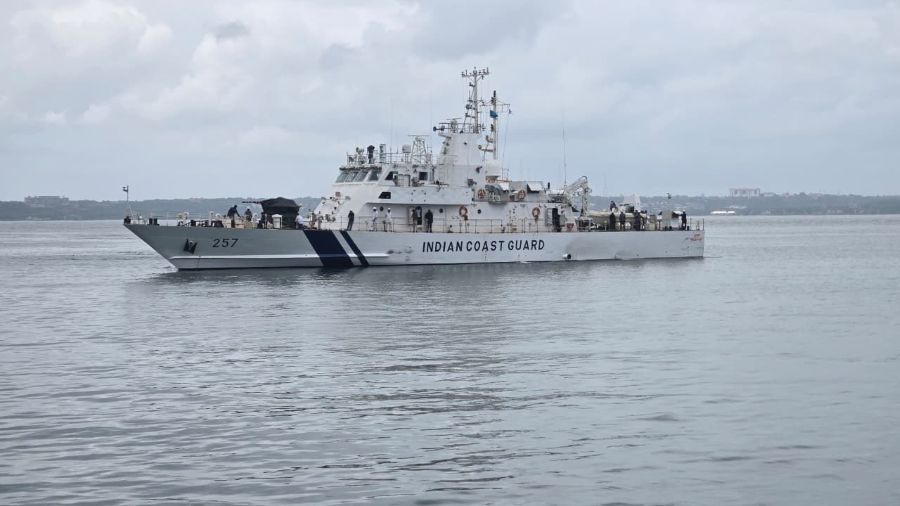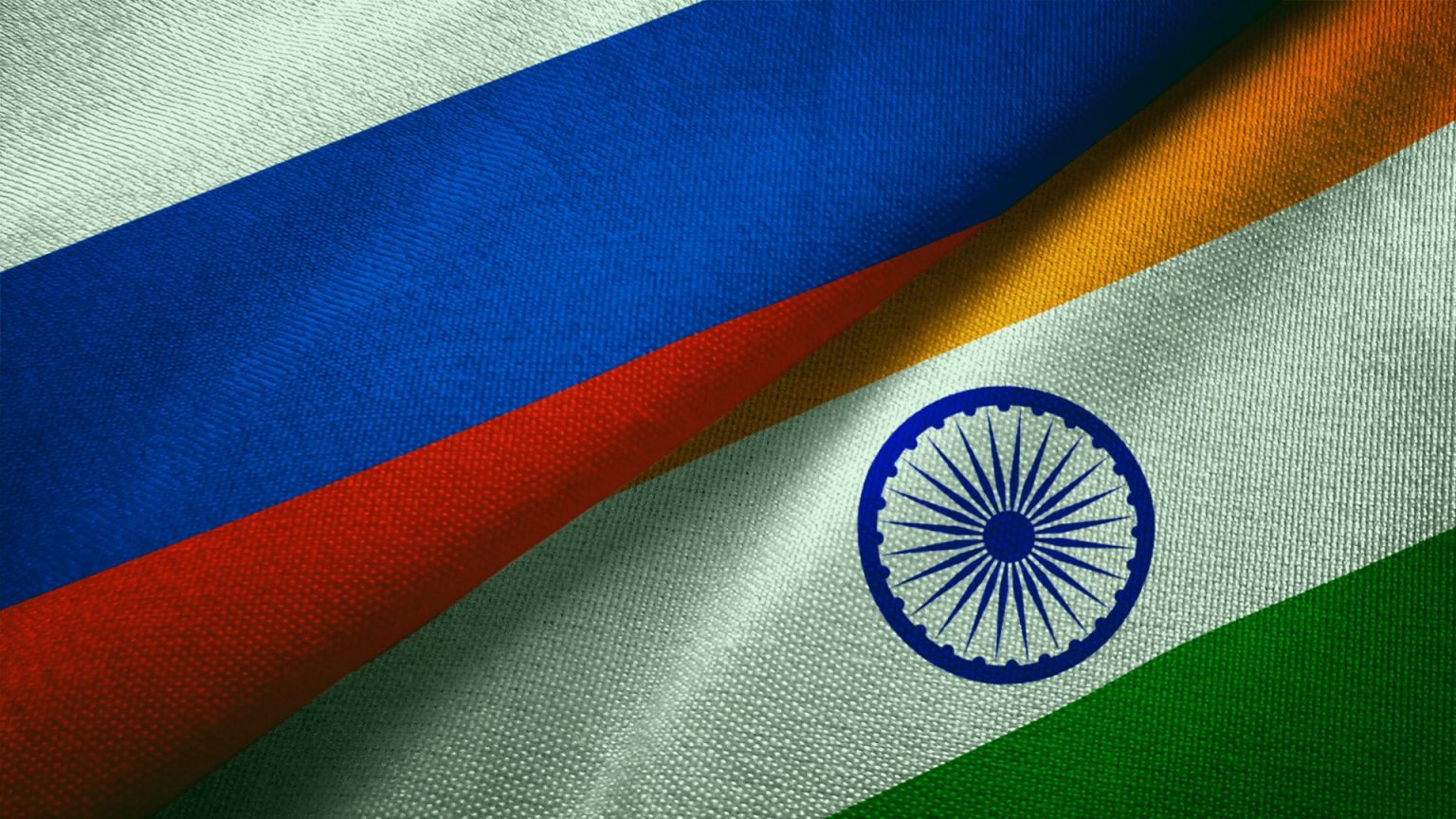Akshar Fast Patrol Vessel

- 06 Oct 2025
In News:
The Indian Coast Guard Ship (ICGS) Akshar, the second vessel in a series of eight Adamya-class Fast Patrol Vessels (FPVs), was commissioned at Karaikal, Puducherry. Built by Goa Shipyard Limited (GSL), this indigenously designed vessel represents a major stride in India’s maritime self-reliance under the ‘Aatmanirbhar Bharat’ and ‘Make in India’ initiatives.
About ICGS Akshar
- Class and Type:Adamya-class Fast Patrol Vessel (FPV)
- Shipbuilder: Goa Shipyard Limited (GSL)
- Indigenous Content: Over 60%
- Length: 51 metres
- Displacement: Approximately 320 tonnes
- Name Significance: ‘Akshar’, meaning imperishable, signifies the Indian Coast Guard’s unwavering resolve to ensure safe, secure, and clean seas.
Key Technical and Operational Features
- Propulsion System:Equipped with two 3,000 kW diesel engines driving indigenously developed Controllable Pitch Propellers (CPP) and gearboxes, the vessel can achieve a maximum speed of 27 knots.
- Endurance:Capable of operating up to 1,500 nautical miles at an economical cruising speed, enabling extended surveillance missions.
- Weapons and Defence Systems:Armed with a 30 mm CRN 91 gun and two 12.7 mm Stabilised Remote-Controlled Guns (SRCG), integrated with an advanced Fire Control System, enhancing accuracy and combat effectiveness.
- Automation and Navigation Systems:Features an Integrated Bridge System (IBS), Integrated Platform Management System (IPMS), and Automated Power Management System (APMS) for high operational efficiency, reduced human intervention, and seamless information integration.
- Deployment:The vessel will be based at Karaikal, Puducherry, under the administrative and operational control of the Commander, Coast Guard Region (East) through District Headquarters No. 13.
Strategic Role and Functions
ICGS Akshar will be deployed for:
- Maritime surveillance and coastal security operations in India’s Exclusive Economic Zone (EEZ).
- Anti-smuggling, anti-poaching, and anti-piracy operations.
- Search and Rescue (SAR) missions, pollution control, and law enforcement duties in the maritime domain.
Its operational flexibility and advanced systems make it a multi-role platform capable of responding swiftly to emerging maritime threats and humanitarian contingencies.
India–Russia at 25

- 06 Oct 2025
In News:
- India and Russia marked 25 years of their Strategic Partnership in 2025, reaffirming their time-tested friendship and multifaceted cooperation amid a shifting global order.
- The partnership, first formalised in October 2000 through a declaration signed by President Vladimir Putin and Prime Minister Atal Bihari Vajpayee, was upgraded in 2010 to a “Special and Privileged Strategic Partnership.” This milestone underscores the enduring relevance of bilateral ties grounded in mutual trust, strategic autonomy, and converging global outlooks.
Evolution of the Partnership
- Over the last quarter-century, the India–Russia relationship has transitioned from a Cold War–era friendship to a broad-based strategic partnership encompassing defence, nuclear energy, science and technology, hydrocarbons, and space cooperation.
- Institutional mechanisms like the Intergovernmental Commission (IRIGC) and the 2+2 Dialogue framework have ensured sustained policy coordination across political, economic, and defence domains.
- At the 22nd Annual Summit held in Moscow in July 2024, both nations adopted joint statements on partnership and economic cooperation till 2030, alongside signing nine MoUs across critical sectors. Prime Minister Narendra Modi was also conferred Russia’s highest civilian honour, the Order of Saint Andrew, in recognition of his contribution to strengthening bilateral relations.
Multilateral and Global Engagement
- India and Russia continue to coordinate closely in multilateral platforms such as the United Nations (UN), G20, BRICS, and Shanghai Cooperation Organisation (SCO).
- During India’s G20 and SCO presidencies in 2023, the two nations held multiple high-level engagements, reaffirming commitment to a multipolar, rules-based international order.
- Russia has consistently supported India’s bid for a permanent seat in the UN Security Council, underscoring its trust in India’s global leadership role.
- Russia’s BRICS chairmanship in 2024 further strengthened this cooperation, with India actively participating in the Leaders’ Summit in Kazan, reflecting mutual alignment on global economic and security issues.
Economic and Trade Relations
- Economic engagement has become the new anchor of India–Russia relations. Bilateral trade reached a record USD 65.7 billion in FY 2023–24, driven by India’s rising imports of crude oil, fertilizers, and minerals, and exports of pharmaceuticals, machinery, and engineering goods.
- Both nations aim to elevate bilateral trade to USD 100 billion by 2030 and mutual investments to USD 50 billion by 2025.
- Negotiations for a Free Trade Agreement (FTA) between India and the Eurasian Economic Union (EAEU) are underway, expected to further liberalise trade flows and enhance connectivity through initiatives like the International North–South Transport Corridor (INSTC) and Arctic route cooperation.
- Emerging areas such as shipbuilding, railways, aircraft construction, and small modular nuclear reactors reflect the partnership’s adaptation to new technological and developmental priorities.
Defence and Security Cooperation
Defence remains the cornerstone of the India–Russia partnership. The collaboration has evolved from a buyer–seller relationship to joint production and technology co-development.
Key projects include:
- S-400 Triumf missile systems
- Su-30MKI and MiG-29 fighter jets
- T-90 tanks and AK-203 rifles
- INS Vikramaditya aircraft carrier
- BrahMos missile joint venture, a symbol of high-end defence collaboration
Joint military exercises such as INDRA and Vostok enhance interoperability and strategic trust. The cooperation under IRIGC–Military and Military Technical Cooperation (M&MTC) ensures continuous modernization of India’s armed forces with Russian collaboration.
Science, Technology, and Space Cooperation
- Science and technology have emerged as vital pillars of bilateral engagement. A 2021 roadmap guides collaboration in nanotechnology, quantum computing, artificial intelligence, and space exploration.
- The Kudankulam Nuclear Power Plant remains a flagship project, with plans for future units under discussion.
- New initiatives are fostering innovation and youth cooperation through institutions like the Sirius Educational Foundation and Atal Innovation Mission, encouraging joint research and startup linkages.
- Both sides are exploring joint lunar and spaceflight missions, expanding beyond traditional sectors to future-ready technologies.
People-to-People and Educational Exchanges
Beyond strategic sectors, cultural, educational, and academic exchanges have deepened mutual understanding. Student exchanges, scholarships, and Russian language learning in Indian institutions have strengthened grassroots connections. Tourism and labour mobility are emerging as new frontiers of bilateral engagement.
Outlook and Way Forward
Marking 25 years of partnership, India and Russia are renewing their cooperation to align with the demands of a multipolar and technology-driven world. The relationship is now expanding into innovation-led, climate-conscious, and connectivity-focused domains, while retaining its traditional strengths in defence and energy.
The upcoming 2025 bilateral summit in New Delhi—coinciding with the 15th anniversary of the “Special and Privileged” status—is expected to chart a roadmap for the next phase, prioritising:
- Concluding the India–EAEU Free Trade Agreement,
- Enhancing energy security and Arctic cooperation,
- Promoting defenceindigenisation, and
- Strengthening regional stability in Eurasia and the Indo-Pacific.
India’s Dairy Sector
- 06 Oct 2025
In News:
India’s dairy sector has witnessed a transformative expansion over the past decade, emerging as the world’s fastest-growing dairy producer. Milk production has surged by nearly 70% in 11 years, rising from 146 million tonnes in 2014–15 to 239 million tonnes in 2023–24, positioning India as a global dairy powerhouse.
India’s Global Dairy Leadership
- India contributes 24.76% of global milk output, maintaining its status as the world’s largest milk producer.
- The sector contributes around 5% to the national GDP and provides livelihoods to over 8 crore farmers, symbolising inclusive and sustainable rural development.
- The per capita milk availability has increased dramatically from 124 grams/day in 2014–15 to 471 grams/day in 2023–24, significantly exceeding the global average of 322 grams/day.
- Leading milk-producing states include Uttar Pradesh, Rajasthan, and Madhya Pradesh, with Haryana consistently ranking among the top three in per capita milk availability.
Institutional Backbone and Cooperative Revolution
- The National Dairy Development Board (NDDB), established in 1965, and the Operation Floodprogramme (1970) laid the foundation for India’s dairy success by replicating the Amul cooperative model across the country. These initiatives transformed India from a milk-deficient nation into the largest producer globally.
- Today, the cooperative network includes 22 milk federations, 241 district cooperative unions, 28 marketing dairies, and 25 Milk Producer Organisations (MPOs).
- Nearly 70% of the dairy workforce comprises women, with 35% actively participating in cooperatives, reinforcing the sector’s role in women’s empowerment.
- The government’s focus on strengthening cooperatives was reiterated by the Union Ministry of Cooperation, established in 2021. Union Home and Cooperation Minister Amit Shah announced that by 2029, every panchayat will have a cooperative society, fostering local economic resilience.
Modernisation and Expansion: Sabar Dairy as a Model
- The inauguration of the Sabar Dairy Plant in Rohtak, Haryana, marks a milestone in dairy modernisation. Built at a cost of ?350 crore, it is India’s largest integrated plant for curd, buttermilk, and sweets, producing 150 metric tonnes of curd, 10 metric tonnes of yogurt, 3 lakh litres of buttermilk, and 10,000 kg of sweets daily.
- The plant not only caters to the Delhi–NCR region but also benefits farmers across nine states, showcasing the potential of cooperative-led growth.
- This expansion aligns with India’s goal to increase its milk processing capacity from 66 million litres per day to 100 million litres per day by 2028–29, under White Revolution 2.0.
Government Schemes and Technological Advancements
The government has launched several initiatives to enhance dairy productivity and sustainability:
- National Gokul Mission – for conservation and genetic improvement of indigenous breeds.
- National Artificial Insemination Programme – to improve livestock productivity.
- Animal Husbandry Infrastructure Development Fund (AHIDF) – to support dairy processing and cold-chain facilities.
- National Animal Disease Control Programme (NADCP) – to ensure animal health security.
Additionally, national cooperative societies for animal feed production, organic manure, and circular economy utilisation of animal by-products have been established.
Advanced technologies such as embryo transfer and sex-sorted semen are being promoted for improved breeding efficiency. Research and development in dairy plant design and automation are being accelerated to make India self-reliant in dairy infrastructure.
NITI Aayog’s Tax Policy Working Paper
- 06 Oct 2025
In News:
In October 2025, NITI Aayog released the first paper under the NITI Tax Policy Working Paper Series–I, titled “Enhancing Tax Certainty in Permanent Establishment and Profit Attribution for Foreign Investors in India.” The paper seeks to enhance transparency, predictability, and fairness in India’s international taxation framework—key to attracting and sustaining foreign investment in the journey towards Viksit Bharat@2047.
Background and Rationale
- Foreign Direct Investment (FDI) has been a cornerstone of India’s economic growth, rising from USD 6 billion in 2005–06 to nearly USD 50 billion in 2024–25. Despite this growth, foreign investors have long faced tax-related uncertainties—particularly concerning the definitions of Permanent Establishment (PE) and Profit Attribution. Ambiguities in these areas have led to prolonged litigation (often lasting 10–12 years), raising compliance costs and discouraging potential investors.
- To address these challenges, NITI Aayog’s Consultative Group on Tax Policy (CGTP)—comprising representatives from the CBDT, DPIIT, ICAI, industry experts, and major consultancy firms—developed this working paper through extensive stakeholder consultations.
Key Concepts
- Permanent Establishment (PE): Refers to a fixed place of business (like a branch, office, or digital presence) through which a foreign enterprise conducts business in India. If a PE exists, the enterprise is liable to pay tax on its income arising in India.
- Profit Attribution: Determines the portion of a multinational’s profits that can be taxed in India, particularly when business activities are spread across jurisdictions.
Major Recommendations
- Optional Presumptive Taxation Scheme:
- Allows foreign companies to opt for a fixed tax rate on India-sourced revenue, based on industry norms.
- Aims to minimize litigation and enhance predictability.
- Legislative Clarity:
- Codification of PE definitions and profit attribution rules in line with OECD and UN models.
- Avoidance of retrospective taxation and inclusion of due process safeguards.
- Strengthened Dispute Resolution:
- Expansion of Advance Pricing Agreements (APAs) and Mutual Agreement Procedures (MAPs).
- Exploration of mandatory arbitration for unresolved international tax disputes.
- Administrative and Institutional Efficiency:
- Introduction of safe harbour rules to simplify compliance.
- Adoption of the OECD’s TRACE system to streamline withholding tax relief.
- Continuous training of tax officials in complex cross-border taxation matters.
- Stakeholder Engagement and Transparency:
- Mandatory public consultations before major tax law amendments.
- Enforcement of a Taxpayer Charter to uphold fairness and transparency.
Judicial Context
The Supreme Court has played a pivotal role in interpreting India’s international tax framework:
- Formula One Case (2017): Held that even temporary use of infrastructure (like a race track) could constitute a PE, emphasizing substance over form.
- Hyatt International Case (2025): Clarified that even global losses do not exempt Indian operations from taxation, reinforcing the “separate enterprise” principle.
Alignment with Global Tax Reforms
India’s approach aligns with the OECD–G20 Base Erosion and Profit Shifting (BEPS) initiative, especially Action 7, which curbs tax avoidance through agency arrangements.
- Pillar One: Ensures digital giants like Google or Amazon pay taxes where consumers are located, even without a physical presence.
- Pillar Two: Introduces a global minimum corporate tax rate of 15%, deterring profit shifting to tax havens.
Significance:
The working paper provides a comprehensive framework for reforming India’s cross-border tax regime—balancing investor confidence with national revenue interests. By enhancing certainty, reducing litigation, and aligning with international standards, it aims to:
- Strengthen India’s Ease of Doing Business environment.
- Attract high-quality, sustainable FDI and FPI.
- Bolster administrative efficiency and taxpayer trust.
Ultimately, these reforms are expected to create afair, transparent, and globally competitive tax system, reinforcing India’s trajectory toward a future-ready economy and the vision of Viksit Bharat@2047.
Draft Rules for Online Gaming

- 06 Oct 2025
In News:
The Ministry of Electronics and Information Technology (MeitY) has released the draft Promotion and Regulation of Online Gaming Rules, 2025, intended to operationalise the Promotion and Regulation of Online Gaming (PROG) Act, 2025. The government has also invited public feedback on the draft rules till the end of this month via email submission.
Objective
The draft rules aim to establish a comprehensive national framework for regulating the online gaming ecosystem in India. They seek to differentiate legitimate e-sports and social gaming from real money gaming (RMG) platforms, thereby ensuring user protection, transparency, and responsible innovation.
Key Provisions
1. Ban on Real Money Gaming: The Act prohibits real money gaming (RMG) — including online poker, rummy, fantasy sports, and betting — where players wager or stake money for potential returns. Only social games and e-sports, meant for recreation, education, or skill development, are permitted.
2. Establishment of the Online Gaming Authority of India (OGAI): A dedicated regulatory body, the Online Gaming Authority of India (OGAI), will be set up to oversee the sector.
- Composition: A Chairperson and five members representing different ministries.
- Powers: Quasi-judicial authority to summon individuals, examine evidence, and issue binding directions.
- Functions:
- Determine whether a game qualifies as an “online money game.”
- Register and certify online social games and e-sports.
- Impose penalties, suspend or cancel registrations for violations.
- Ensure compliance with ethical and revenue guidelines.
3. Registration Framework
- Mandatory Registration: All social and e-sports games must register with OGAI.
- Validity: Registration certificates will remain valid for up to five years.
- Disclosure Requirements: Companies must declare revenue sources and user protection measures.
- Revenue must originate from advertising, subscriptions, or access fees, not wagers or stakes.
4. Penalties and Offences
- Offering or operating an online money gaming service: up to 3 years’ imprisonment and ?1 crore fine.
- Advertising such platforms: up to 2 years’ imprisonment and ?50 lakh fine.
- Offences are non-bailable, and company officials can be held personally liable.
- Penalty quantum will depend on extent of gain, user loss, and frequency of violation.
5. Grievance Redressal Mechanism (Three-Tiered)
- Internal redressal unit of the gaming company.
- Grievance Appellate Committee (GAC) under the IT Rules, 2021.
- Online Gaming Authority of India (OGAI) as the final appellate body.
6. Role of Various Ministries
- Ministry of Electronics & IT (MeitY): Nodal authority for overall regulation.
- Ministry of Youth Affairs: Oversight of e-sports.
- Ministry of Information & Broadcasting (I&B): Regulation of social games, including issuing codes of practice and classification guidelines.
